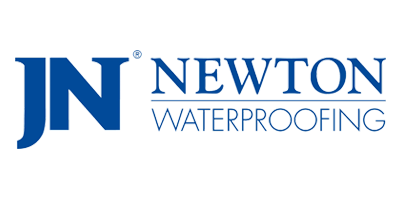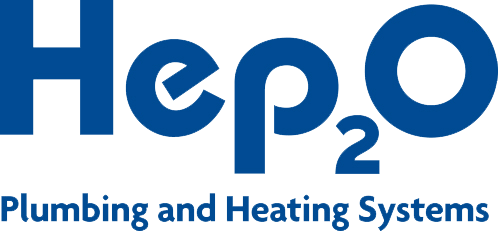Back
Cold prospects: simple ways to turn strangers into steady work
Cold prospects in construction are a bit like houses on a new estate you have never worked on yet. You can see the plots. You know they will need trades. But you have to walk up, knock, and start that first chat. In this guide, you will learn how to turn cold prospects into warm conversations, site visits, and long-term clients.
You will see clear steps on how to pick the right people, write simple cold emails, use LinkedIn, make cold calls feel natural, and keep track of what is working so your pipeline stays full.
What cold prospects are and why they still matter in 2025
Cold prospects are people or firms who have never spoken to you, never sent an enquiry, and may not know your name at all. That might sound like hard work, but for many B2B firms, most new business still starts with some form of cold outreach. Average reply rates on cold email sit near 5 to 10 per cent in B2B, so you expect more no’s than yes’s, but the yes’s can be very valuable.
Think of cold prospects like a new patch of land. One call, email, or message is a single shovel of soil. It takes many small actions to see something grow.
Key points about cold prospects
- They have never spoken with you or filled in a form on your site.
- They might not know your company or what you do.
- They can still become some of your best long-term clients.
- It often takes many touchpoints before they buy, not just one.
For construction, home improvement, and building products firms, cold outreach is often how you reach:
- New main contractors or housebuilders in your region.
- Architects and specifiers who sit early in the chain.
- Merchants and trade counters who can stock or push your products.
- Facilities managers who look after multiple sites.
Once you see cold prospects as a normal part of business, they feel less like strangers and more like the next group of contacts you have not met yet.
Get clear on your cold prospects before you contact anyone
If you try to talk to everyone, you end up connecting with no one. Cold prospects become much easier to handle when you are clear about who you want to reach and what type of work you want.
Work out who your best cold prospects are
Most B2B cold email campaigns only see reply rates around 5 per cent, so you cannot waste those sends on the wrong people. Focusing on a tight group often gives better results than blasting a big, loose list.
Simple ways to define your ideal cold prospects
- Look at your best current clients.
- What sector are they in (housebuilders, installers, social housing, merchants)?
- Where are they based (South East, Midlands, Ireland)?
- What size are they (turnover, number of sites, number of vans)?
- Think about the jobs you want more of.
- High margin refurb work, new build packages, long framework contracts, supply only, etc.
- List the right job roles.
- For example: commercial director, contracts manager, buyer, head of property, lead architect.
- Set 3 simple filters for any target list, such as:
- Location in your service area.
- The sector you serve well already.
- Role with budget or influence.
You can jot this down on a single sheet called your “ideal client sketch”. Keep it by your desk. If a name does not fit, they are not a priority for cold contact.
Use quick research, not a huge report
You do not need a thick research file on each prospect. You only need enough to send a message that feels human.
Before you contact someone, take 5 minutes to check:
- The company site
- What do they specialise in? New build, social housing, large refurb, retail fit out?
- Any case studies close to what you do?
- LinkedIn
- Does the decision maker talk about certain types of job?
- Are they growing, hiring, or opening new offices?
- News or planning sites
- Are there any new schemes in your patch that are linked to?
This small bit of homework helps you open with a line that shows you are not guessing.
Use a simple outreach plan: email, LinkedIn, and calls, working together
Cold prospects live across many channels. In B2B, it often takes dozens of touchpoints before a deal closes, not one lucky email. So you want a simple pattern you can repeat: email, LinkedIn, call, then follow up.
Write cold emails that sound like a real site visit
Most decision makers in our sector get sales emails every day. Average response rates across B2B sit below 10 per cent, so the bar is not high. Your job is to sound like a real person who has done their homework.
Keep your cold emails short and clear
- Subject line: mention their firm or a job type they care about.
- Example: “Roofing support for your planned stock upgrades”
- Opening line: show you know who they are.
- “I saw you are carrying out window replacements across your stock in Bristol this year.”
- One simple link to their problem.
- “We help housing providers cut call backs on window installs by focusing on [simple method].”
- One clear next step.
- “Worth a quick 10-minute call next week to see if this could help your plans in Q1?”
Think of each email like a site note. Short, clear, and about the job in hand.
Use LinkedIn like an intro at the trade counter
LinkedIn is a bit like walking into a merchant or trade show and seeing who is in the room.
Simple steps:
- Tidy your own profile first.
- Say clearly who you help (for example: “Helping East Midlands housebuilders with low-hassle cladding installs”).
- Connect with target roles from your ideal client sketch.
- Do not pitch in the first message. Instead:
- Mention something real: a scheme, a post, a shared contact.
- Example: “Saw you are working on the Kingswood scheme in Leeds. We have been supporting similar sites on [brief point]. Happy to connect.”
- Like or comment on their posts once or twice before you ask for a call.
LinkedIn makes cold prospects feel a little warmer before you send that email or pick up the phone.
Make cold calls feel like follow-ups, not first hits
A cold call works best when it feels like part of a series, not a random hit. Aim to call after they have:
- Opened one of your emails.
- Connected with you on LinkedIn.
- Engaged with a post or case study.
Simple cold call opening
“Hi, it is [name] from [company]. I sent you a quick email last week about helping with [problem]. Is now a bad time to ask you one short question on that?”
If they say they are busy, offer a better time or ask who handles that area. You are trying to have a short, useful chat, not a long hard sell.
Use your network, events, and referrals to warm up cold prospects
Cold outreach works faster when someone else opens the door for you.
Turn happy clients into a simple referral engine
People in construction tend to trust people they already know. A short note from a happy client can do more than ten cold emails.
Here is a low-friction way to ask:
- Pick 5 clients who like your work.
- Tell them, “We are looking to take on 2 or 3 new clients like you this year. Is there a main contractor, architect, or housing provider you think we should speak with?”
- Offer to write the intro email for them so it is easy.
You can then treat that new name as a warm prospect, not a cold one.
Make events work harder for you
Think of trade shows, merchants’ breakfast mornings, and CPD events like a room full of cold prospects in one go.
To make them pay:
- Check the attendee or exhibitor list before you go.
- Pick 5 to 10 people you would like to meet.
- Prepare one simple question for each, linked to their work.
- After the event, send a short LinkedIn note or email that mentions the chat.
Example:
“Good to meet you at the GAI event in Birmingham. You mentioned a headache with finding reliable fire door partners in the South West. Happy to share what we have learned if helpful.”
Follow up without being a pest
Most sales do not come from the first outreach. Some studies say cold prospects can need 20 to 50 touchpoints across different channels before they buy. The trick is a steady, calm follow-up that adds value.
Build a simple follow-up rhythm
You do not need fancy software to keep track.
You can:
- Use a basic CRM or a simple spreadsheet.
- Log each email, call, LinkedIn message, and meeting.
- Set a reminder for the next touchpoint before you close the file.
A simple pattern might be:
- Day 1: First email.
- Day 3: LinkedIn connection request.
- Day 7: Short follow-up email.
- Day 14: Call.
- Month 1 onwards: light touches every 4 to 6 weeks with useful content, case studies, or project news.
Share useful content, not constant sales pitches
Think of content like tools in your van. You pull out the right one for the job.
Useful items to send:
- A short case study on a similar scheme.
- A simple one-page guide: for example, “3 ways to cut call backs on window installs in social housing”.
- A photo-led project summary in their region.
- A link to a news item or code change that might affect them.
Each touch says, “We understand your world and can help”, without pressing for a sale every time.
Measure your cold outreach so you know what is working
Cold outreach feels random if you never look at the numbers. Once you track a few simple metrics, you can see which parts are working and which need work.
Watch a few simple numbers, not everything
Research shows that average cold email open rates sit around 20 to 30 percent in B2B, with reply rates in the mid single digits. You do not need to match “best in class”. You just need things to move in the right direction.
Simple numbers to track each month:
- How many new contacts you reached out to.
- Email open rate (what share open your emails).
- Email reply rate (what share write back at all).
- Calls made and conversations held.
- Meetings or site visits booked from cold outreach.
- Quotes sent and jobs won from those contacts.
You can track this in a sheet or CRM. For most small teams, one page is enough.
Use a quick review loop
Once a month, have a 30-minute check-in, even if it is just you.
Ask:
- Which sector replied more: housing, main contractors, installers, or merchants?
- Which subject lines got more opens?
- Which email or call script led to more meetings?
- Are LinkedIn messages working better than calls for some roles?
Based on this, tweak one thing at a time. For example, test a new subject line for a month, then compare.
Keep the flow going with your cold prospects
Think of your cold outreach like a steady water feed to a site. If the pipe runs dry, the job slows down. If it keeps flowing at a calm, steady rate, work keeps moving.
You have seen how to:
- Pick clear, cold prospects in your patch.
- Do quick research so your outreach feels personal.
- Use email, LinkedIn, and calls together, not in isolation.
- Lean on your network, events, and referrals to warm things up.
- Follow up without being a pest, using simple, useful content.
- Track a few key numbers so you can improve over time.
Cold prospects will always feel a bit awkward at first. But they are often the bridge between where your business is today and the kind of clients and projects you want in one or two years’ time.
If you keep your messages simple, human, and focused on real problems your clients face on site and in the boardroom, you give those cold prospects a clear reason to talk. Over time, those first small contacts turn into tenders, frameworks, and steady repeat work.
Ready to turn cold outreach into steady leads?
If you want to turn more cold prospects into clients and get a steady flow of enquiries, our team can help. Purplex works with construction, home improvement, and building product firms across the UK and Ireland to plan cold outreach, content, SEO, PPC, email, and social media that all pull in the same direction. Talk to us about a lead generation plan that fits your sales targets, your service area, and your budget.
For more information, use our contact form, email grow@purplexmarketing.com, or call 01934 808132. Let’s talk about how your next cold outreach campaign can feed your sales team with better, warmer leads.

About the author – Martyn East
As an SEO Executive at Purplex, I focus on lead generation and SEO for construction, home improvement, and building product companies. I help clients turn cold prospects into enquiries with better content, clearer user journeys, and data-led reporting. If you want more of the right leads, talk to our SEO services and lead generation team.
Connect with me on LinkedIn or read more of my articles here: Martyn East.
This entry was posted in Lead Generation





